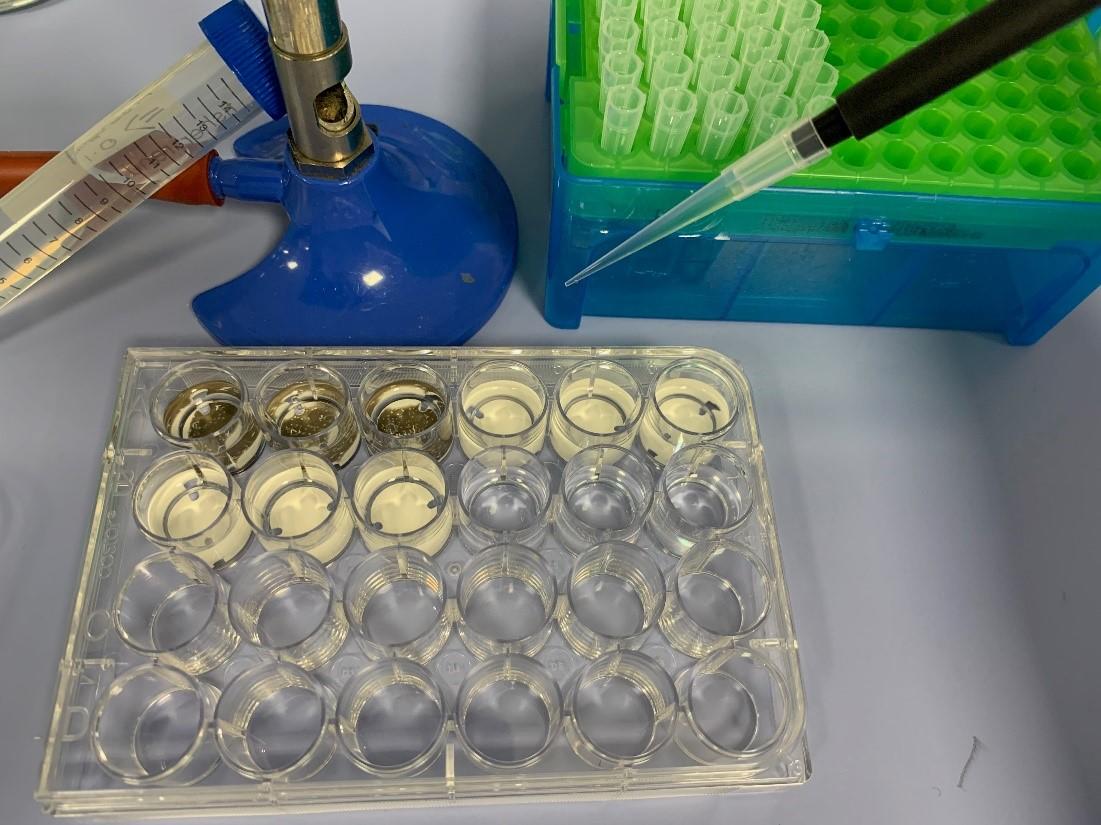Development of a novel antibacterial nanocoating to reduce nosocomial infections

The Microbiology Society is undertaking a project entitled A Sustainable Future as part of our 75th Anniversary, which aims to highlight the Sustainable Development Goals (SDGs) to our members and empower them to use their research to evidence and impact the goals. Earlier this year, we put a call out to our members to submit case studies in the following three areas: antimicrobial resistance, soil health and the circular economy.
This case study is written by James Butler, who is a PhD student at the University of Plymouth and a member of the Microbiology Society. It focuses on antimicrobial resistance; a naturally occurring process, whereby micro-organisms (bacteria, viruses, fungi and parasites) can change and adapt over time, either by modifying the target of the antimicrobial, or by developing and exchanging resistance genes.
What are the challenges/needs that this research addresses?
Hospitals can serve as major reservoirs of pathogenic micro-organisms, with both patients and environments potentially enabling their persistence. While infection control and prevention are major areas of work in healthcare environments, niches such as plumbing systems can escape routine disinfection. Previous research has demonstrated that sink traps, found immediately below sinks, are supportive of bacterial growth and biofilm formation and can be the source of infection outbreaks in hospital wards. This project addresses this problem by seeking to develop an antibacterial coating comprising suitable nanomaterials which reduces the ability of bacteria to form biofilms and thereby persist. If this coating were found to be effective, with potent antibacterial and antibiofilm activity, it could be applied to the plastic surfaces of hospital plumbing systems and prevent the problem from developing before it can have an effect on patient health.
What findings and solutions were provided by this research?
So far in my project I have worked to develop the coating itself, refining its formulation and application to a test substrate. More recently, I have had successful results testing the nanocoating in an in vitro setting against a common nosocomial pathogen, resulting in a very high percentage reduction in biofilm formation. While I have unfortunately been affected by the current pandemic, stopping me from progressing onto my next experiments as quickly as I would have liked, I am looking forward to testing the nanocoating against additional relevant bacterial species in vitro. Later, I will be taking advantage of my links with medical staff from the local hospital trust to access wards where I can install nanocoated specimens and leave them to work longer term – allowing me to test their in situ efficacy.

How can this research support the transition to a more sustainable future?
The sustainable use of antibiotics, due to the development of resistance, is a major challenge that we have to tackle within the next few decades if we are to avoid the dawn of a post-antibiotic era. The development of novel antimicrobials is an obvious and very important area of work in this effort, but a less appreciated area is infection control and prevention. If we can reduce the transmission of infectious diseases, particularly in environments where they have a high impact on health such as hospitals, we can reduce the use of antibiotics in the first place and thereby minimise the opportunities bacteria have to develop resistance to them. In this way, this project is seeking to enable a more sustainable future for our use of antimicrobials. Further to this, preventing colonisation of plumbing systems may have other benefits for sustainability in terms of reducing use of disinfectants and other chemicals, and requiring less frequent replacement of plumbing materials. As a result, this research could lead to a reduction in the ecological impact of infection control.
What is the future for research and innovation in this area?
Antimicrobial nanotechnology is a relatively new field and the last few decades have seen major efforts to standardise experimental practice and develop new ways to measure properties such as antimicrobial activity in a lab environment in a robust and repeatable way. I have had to do a fair amount of development of methods in my own PhD project, so I am very familiar with this process! I think that the future for research in this area will likely focus on working out how to best modify and/or combine different types of nanomaterials to get the best out of their potential properties. Where nanomaterials are exposed to cells or tissues, it is important to ensure that they are non-toxic and biocompatible while also offering potent antimicrobial activity – this balance can be challenging and requires a lot of collaboration across different disciplines including microbiology, cell biology, material science and engineering. For my own project, nanocoatings are not envisaged to be used in the context of a living organism but will be applied to surfaces in the built environment; it is therefore more relevant to consider the potential release of particles to the wider environment and the possible ecological effects nanoparticles may have on life downstream.
About the author

James Butler is a PhD student at the University of Plymouth and a member of the Microbiology Society. More information about his work is available here.


